Mary Gottschalk's Blog, page 6
May 7, 2014
Reaching Beyond Your Grasp
Any day you don’t learn something new is a day you should
have stayed in bed. ~Jerome A. Gottschalk
 If I heard that phrase once, I heard it a thousand times as I was growing up. It spoke volumes about my father’s commitment to education. Schooling was important, of course, but what mattered even more was the kind of education you get when you surround yourself with people who are smarter and more skilled and perhaps more talented than you. In my father’s worldview, every minute of every day provided an opportunity to learn something new. A corollary was that if you worked hard and “knew your stuff,” the odds were in your favor.
If I heard that phrase once, I heard it a thousand times as I was growing up. It spoke volumes about my father’s commitment to education. Schooling was important, of course, but what mattered even more was the kind of education you get when you surround yourself with people who are smarter and more skilled and perhaps more talented than you. In my father’s worldview, every minute of every day provided an opportunity to learn something new. A corollary was that if you worked hard and “knew your stuff,” the odds were in your favor.
What that meant, as I was growing up, was that I was always reaching beyond my grasp. It began when my parents enrolled me in 1st grade at age five rather than six. At the end of 3rd grade, my parents arranged for me to go directly to 5th grade, where I arrived knowing nothing of the long-division and decimals skills my schoolmates had long since mastered. By the end of the year, I was at the top of my class. My parents expected nothing less.
That pattern continued into college and throughout my career. I always seemed to be in over my head, always racing to learn what those around me already knew. Working as a financial consultant to Fortune 500 companies, I struggled, on a daily basis, to keep ahead of the sometimes breathtaking pace of innovation in the derivatives markets. I certainly stubbed my metaphorical toe several times along the way, but my successes were pretty incredible, particularly as a woman in a man’s world in the 1970’s and 1980’s.
And yet, I’ve spent much of my professional life locked into that 5th grade moment, terrified that I didn’t know enough, that I couldn’t keep up, that I wasn’t qualified. As I approach 70, I am still beset by a moment—very brief but still very real—of panic every time I walk into a roomful of strangers.
The memory of this persistent terror bubbled to the surface as I blogged on The Atlantic’s recent article on the confidence gap that assails so many women. At first glance, it seemed I could be exhibit #1 for their theory.
But upon reflection, it’s a bit more complicated. First of all, my lack of confidence never stopped me from reaching for that next challenge, from taking the next risk. I would even make the case that my self-doubts were a result of my insistence on putting myself in situations in which I was sure to go to bed at night having learned something new. After all, if you are completely confident that you know the situation cold, you probably won’t learn much.
And don’t forget the second half of my father’s dictum—that if you work hard and develop the necessary skills, things have a good chance of working out. According to Claire Shipman and Katty Kay, the authors of The Atlantic article, this is very much a man’s point of view (women assume failure is their own inadequacy rather than a result of inadequate effort). If I didn’t quite believe it in 5th grade, I certainly did by my early-30s, based largely on a heady string of promotions and salary increases.
Which leads me to my last but most certainly not least point: my parents never mentioned that the rules were different for females. I always operated on the assumption that if, after doing my best, my boss didn’t appreciate what I could do, I needed to find a new job and a new boss. It didn’t matter why it wasn’t working. Perhaps I wasn’t cut out for that type of work. Perhaps he was a lousy manager. Perhaps he just didn’t like me. Perhaps he was a male chauvinist. Whatever the reason, it seemed more important to find a challenging job where I could make a difference than waste time trying to “prove” that my boss was wrong.
Which brings me back to The Confidence Gap. I have no doubt that the confidence gap is real, although I do not believe that self-doubt is unique to women. But I do agree with the authors that the best antidote for a lack of confidence is taking action. It keeps you from thinking about your doubts and reinforces your belief in yourself and your ability to get things done.
Have you taken action in the face of your own doubts? I would love to hear your story.
I will continue to blog on themes from A Fitting Place (now out and available on Amazon and as an iBook) and I remain very interested in guest blogs from readers and writers who’d like to weigh in on any issues relevant to the book.
The post Reaching Beyond Your Grasp appeared first on Mary Gottschalk - Author.
May 1, 2014
A Fitting Place is Out!
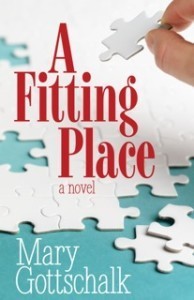 A Fitting Place is now out and available for sale on Amazon and iBooks.
A Fitting Place is now out and available for sale on Amazon and iBooks.
Early 5-Star Reviews:
“…flawless crafting of plot and characters.”
“Brilliant treatment of a touchy topic.”
“The characters of A Fitting Place are refreshingly human.”
“… not only a fascinating, relevant story but it is an in-depth look at relationship issues and societal perspectives.”
The Story
In the wake of her husband’s desertion, Lindsey Chandler is caught up in a rebound romance that reprises the same destructive inter-personal dynamics that plagued her marriage.
Because her new love is a woman, the relationship challenges Lindsey’s long-held assumptions about gender roles. For example, she had consistently subordinated her needs to her husband’s in the belief that her role required her to be agreeable and supportive. When she finds herself in a subordinate role in a same sex relationship, she is forced to look in the mirror, to examine her own responsibility for her situation.
Freed from the straightjacket of societal notions of friend, wife, and mother, Lindsey calls on inner resources she never knew she had, as she sets out to build a new life for herself and her teenage daughter.
To buy now, click below!
A Fitting Place in paperback A Fitting Place for Kindle
A Fitting Place is also available on iBooks.
The post A Fitting Place is Out! appeared first on Mary Gottschalk - Author.
April 30, 2014
A Fitting Place – A Metaphor
 Tomorrow is the big day—the release of my first novel, A Fitting Place.
Tomorrow is the big day—the release of my first novel, A Fitting Place.
Since I began to use my book cover to promote the book, people have asked me about source of my title. The one that actually made me laugh out loud came from a friend who buys his athletic shoes at a local emporium called “The Fitting Place.”
I assure you, I didn’t have a shoe store in mind when I picked the title. On the other hand, a place where you can try something on to see if it fits is not so far off the mark.
So, herewith, some thoughts about my title, which serves as a metaphor on several different levels.
A Fitting Room – In the days when I still liked to shop for clothes, a fitting room was a great place to try on a new persona while I was trying on a new outfit. I’d never worn purple—how would it look with my skin? Would I feel sexy or tart-y in a sequined dress with a plunging neckline? Those dressing rooms coughed up some unexpected treasures that delighted me for years. But more than once, my “new-persona” purchase languished in a closet until I carted it off to Goodwill.
The dressing room is a metaphor for Lindsey’s love affair with a woman. The relationship offers an intimacy she has always ached to have, an opportunity to try a different way of living and loving. But will that same-sex relationship stand the test of time, or will it founder just as her previous relationships with men have foundered?
The Biblical Notion of Fitting. The term “fitting” appears frequently in both the Old and New Testament, usually referring to actions or events that are suited to the circumstances. It stands in contrast to events or actions that are seen to be “right” in some a priori or moralistic way.
For most of her life, Lindsey has been determined to do or say the “right” thing, based on the societal values, including gender roles, with which she was raised. She routinely subordinated her needs to the whims and desires of others, or to what she assumed was expected of her. This approach to life has left her with chronic anxiety and stomachaches that sap her energy.
It is only when Lindsey begins to take responsibility for her own actions based on her own needs—to do what fits the situation rather than what she thinks someone wants—that her anxiety level drops and her stomachaches ease. It is the beginning of maturity.
A Jigsaw Puzzle – Have you ever had the thoroughly annoying experience of working on a jigsaw puzzle with a piece or two missing? Have you ever had the rather more distressing sense that there was a piece of information missing from your life, a crucial insight that would make everything okay if you knew what it was?
That’s exactly how Lindsey has felt for years. But the missing pieces were largely of her own making, a result of her effort to live by what she assumed other people wanted, a consequence of her tendency to withhold information about herself and to dole out only what she thought people “ought” to know.
The pieces of the puzzle began to fall into place as Lindsey began to acknowledge her own needs and, in the process, discover that what her friends and family really wanted from her was quite different than what she had assumed.
How does the metaphor of A Fitting Place apply to your life?
The post A Fitting Place – A Metaphor appeared first on Mary Gottschalk - Author.
April 21, 2014
The Confidence Gap
For most of her life, the heroine of my forthcoming novel has had difficulty speaking up for herself. In a recent blog, I wondered how many women, like Lindsey, experience failure in their personal and/or professional lives because they “wait to be asked” rather than asserting themselves? It’s hard, after all, to be successful if no one knows what you can do or what you think.

credit: Edmon de Haro
An article in the May issue of The Atlantic, The Confidence Gap, offered a very robust answer to my question. Based on an array of sociological and scientific studies, the article posits the existence of “a vast confidence gap that separates the sexes. Compared with men, women don’t consider themselves as ready for promotions, they predict they’ll do worse on tests, and they generally underestimate their abilities.” The authors, Claire Shipman and Katty Kay, themselves highly respected and successful journalists, attributed this confidence gap to “factors ranging from upbringing to biology.”
The impressive data they marshal includes:
A Manchester Business School survey in which women consistently assess their value at 20% less than men with comparable skills and education.
A joint study with Cornell University and Washington State University in which women who underperformed men in a test on scientific reasoning also skipped many of the questions. When required to answer all questions — to guess if necessary—their scores were comparable to the men.
A personnel study at Hewlett-Packard that indicated that women applied for a promotion only when they believed they met 100% of the qualifications while men typically applied when they thought they could meet 60% of the requirements.
Differences in the brain chemistry of men and women with respect to making choices, dealing with stress, and emotional memory.
Differences in the impact of testosterone and estrogen on social skills vs. competitive activities.
Differences in the impact of socialization—early schooling and sports in particular—on the need for approval and/or the ability to bounce back from criticism or failure.
Startling examples of a confidence gap as experienced by several of America’s most successful women.
But what ultimately makes this article so compelling is the authors’ ability to frame the confidence gap in a way that any woman, regardless of biology, upbringing, or gender norms, can recognize and address in every day life.
Quoting Richard Petty of Ohio State University, the authors note that “Confidence is the stuff that turns thoughts into action.” In the authors’ view, confidence “is the factor that turns thoughts into judgments about what we are capable of, and then transforms those judgments into action.
The authors recognize that taking action isn’t always easy and it isn’t always enough. Sometimes courage or anger or creativity or the willingness to take a risk is also required. They also believe that, whatever your level of confidence, action reinforces it and inaction erodes it.
I was struck by how powerful this simple concept is. Virtually every example, every survey conclusion, every statistical study had, at its core, a disconnect between a woman’s desire or ability, and the action she took in response to it. Confidence may make it easier to act, but it is not the same as a decision to act. By the same token, a decision to act can build confidence.
In my novel, Lindsey’s challenge is to learn to act and to speak up even if she is unsure? Can you do that … can you bridge the confidence gap?
The post The Confidence Gap appeared first on Mary Gottschalk - Author.
April 14, 2014
The Feminine – What is it?
 The series on issues relevant to my novel, A Fitting Place, continues this week with a guest blog from Sara Stibitz, who offers a millenial’s perspective on “doing gender.”
The series on issues relevant to my novel, A Fitting Place, continues this week with a guest blog from Sara Stibitz, who offers a millenial’s perspective on “doing gender.”
In the summer of 2013, I traveled through South America solo and completely unplugged from my life as I knew it. Several months into my return from the five-month-long trip, I commented to a friend that I still felt out of sorts, and I wasn’t quite sure why.
Part of it had to do with my, shall we say, relaxed personal norms on dress and appearance which tend to go along with life in dorm-style hostels. I’d grown accustomed to putting little to no effort into hair, makeup, or clothes, and it was hard to slip back into the cultural norms expected of women in our society. I struggled with the feel and look of a bare face because I knew it wasn’t what was expected of me. I struggled with clothing because the most comfortable clothes were baggier and hid my shape. I felt frustrated at my lack of ability to be feminine.
My friend listened to me relate my frustration. In response, she asked me a series of questions, beginning with, “How do you walk?”
I looked at her, wondering at her meaning.
“Do you walk like a man, or do you walk like a woman?” she pressed.
I took a moment to consider the question. The truth, I conceded, was that I likely walked like a man; I tend to power-walk, heels digging into the ground as I launch myself forward step by step. She asked a few more questions which led me to see how I went about my day. “I guess I’m just more manly,” ready to accede that I had no womanly wiles.
“No,” she said. “You have both masculine and feminine energy. It’s just that you operate from your masculine side more often. How do you let your feminine express itself?”
I noticed she used feminine as a noun as opposed to an adjective. I also noticed I had no answer.
The conversation lingered in my mind for the rest of the day, and quite some time after that. Over the next few weeks, as I asked the same questions of several female friends, I realized that I’d surrounded myself with women who identify with masculine energy more than feminine energy. It dawned on me that I allowed little to no room for femininity in my life.
We like to differentiate and exaggerate the separateness of the feminine and masculine, claiming they are entirely separate entities. The truth is, the masculine and feminine energies are two sides of the same coin. One does not exist without the other. More importantly, we are each masculine and feminine in varying degrees, at varying times.
To be clear, this is not about sex or sexual orientation. This is about questioning the way we allow masculinity and femininity to play out in our lives. We have a choice over how these energies affect us day-to-day, but it requires us to first tune our awareness to them.
Feminine power is in being; masculine power is in doing. I was struggling after my return because I was power-walking my way through life, focused on activity and outcome. I had no comfortable outlet for feminine energy; I kept trying to resort to the typical means our culture furnishes for women—clothing, hair and make-up—and felt no connection. Awareness was half the battle; once aware, I could seek out the things that put me in touch with the feminine. Or more precisely, my feminine.
How do the masculine and feminine show up in your life? How do the people around you change the way your feminine and masculine are expressed?
 In 2013, after a seven-year career as an investigator and mediator, Sara left to follow a life-long dream, traveling solo through South America. As she blogged about her adventure, she discovered the creative possibilities of writing, and it has become her passion. Since returning, Sara has written for the Des Moines Register, YogaIowa, Spoilage Literary Magazine, and works regularly as a freelance writer and editor.
In 2013, after a seven-year career as an investigator and mediator, Sara left to follow a life-long dream, traveling solo through South America. As she blogged about her adventure, she discovered the creative possibilities of writing, and it has become her passion. Since returning, Sara has written for the Des Moines Register, YogaIowa, Spoilage Literary Magazine, and works regularly as a freelance writer and editor.
You can contact Sara through her website or through Facebook.
The post The Feminine – What is it? appeared first on Mary Gottschalk - Author.
April 7, 2014
Flying the Coop – Leaving Mennonite Land
And the day came when the risk to remain tight in the bud was
more painful than the risk it took to blossom — Anais Nin
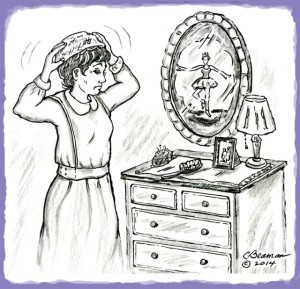 My guest this week is Marian Longenecker Beaman, who looks back at her decision to step outside of her comfort zone and leave the Mennonite community in which she was raised.
My guest this week is Marian Longenecker Beaman, who looks back at her decision to step outside of her comfort zone and leave the Mennonite community in which she was raised.
A prayer covering hugs my head capped by two circles of interlocking dark-brown braids. I chafe in a blue wool dress with a cape that masks my womanly curves. Standing in front of my dresser mirror as Sister Longenecker at Lancaster Mennonite School where I teach, the truth dawns:
Me: I can’t live the rest of my life looking like this!
Other Self: Then come with me.
Me: But what would my parents say?
Other Self: They aren’t living your life.
Me: Dean Noah Good wants me to stay. He says he thinks it is God’s will for me.
Other Self: How can he know? He is not God.
Starting a [new life] demands a conscious falling through the window,
a journey through the looking-glass — Madeleine l’Engle
I’ve had this dialogue before, but the urge to change is growing stronger. One possibility: My church endorses a Teacher’s Abroad Program (TAP). I’ll sign up for that. Apply for Western Europe, maybe Germany or Switzerland, land of my ancestry. Maybe I will meet a nice German boy. I’ll teach English, learn German, have a family–and never have to wear my constricting Mennonite garb again.
I can escape!
But one enchanted evening I meet Cliff, on Christmas break from college and staying with my next door neighbor. I am his blind date. One week into our friendship, he has drawn a portrait of me, written poetry about me, presented me with two hand-made cards, and given me a corsage of pink carnations. He says he is falling in “like” whatever that means. It feels more like true love to me.
Cliff (the Catalyst) suggests I find a school away from my Mennonite culture. Okay, it could be a private Christian school, just not a Mennonite one. Soon I apply to Charlotte Christian School. The phone interview is embarrassing on both ends. I can’t understand the board member’s southern drawl, and he can’t decipher my lilting Pennsylvania dialect. Overly polite, we ask, “Will you repeat that please?” Nevertheless, I am asked to come down to Charlotte, NC for a face-to-face interview.
The school can afford to pay only bus fare, so I mount the Greyhound for the 14-hour trip with my Baum’s bologna sack lunch and suitcase, a square brown thing with metal snaps. It’s late May so it gets hotter as we head farther south, but at least I am not wearing a cape dress. Before the trip, I boldly shed my prayer cap too, though braids still hug my head. A search committee member in Charlotte says, “You come highly recommended from Lancaster Mennonite School.” (What? Dean Good approves of my leaving LMS and mingling with Baptists, Presbyterians, Methodists—maybe even Episcopalians, for heaven’s sake.)
I am offered the job and take it. Even with the meager salary of $4,200, there are fringe benefits: I could understandably leave my family and be closer to my boyfriend Cliff (now teaching in Florida). My family has mixed feelings about the move, but after all I am 25 years old. My mother says finally, “I’d rather have you be a happy Christian than a sad Mennonite.”
My dad, maybe worried that I’ll end up an old maid, even helps me pick out a car. In the 1980s movie, Marty’s time machine is a DeLorean, thrusting him “Back to the Future” where he gets stuck in the past. My time machine is a 1960s Valiant that propels me forward from Mennonite farmland in Pennsylvania to Billy Graham country in Charlotte, North Carolina.
The obliging officials at Charlotte Christian School recommend a place to live in a neighborhood of elegant Southern ladies. Their charm is most enchanting (How ya’ll doin’? the plural directed to just me) and I take up residence with two fancy young women who roll their hair at night for flip hairdos by day.
By the end of the school year, I am wearing my first ever piece of jewelry, a diamond engagement ring, which “plain” Grandma Longenecker beholds with an ashen face, her eyes communicating betrayal of my heritage and family values. Nevertheless, the ring never leaves my finger. And I get brave enough to cut my hair.
That’s the way things come clear. All of a sudden. And then you realize
how obvious they have been all along — Madeleine l’Engle
Yes, standing in front of that mirror as Sister Longenecker at Lancaster Mennonite school in Pennsylvania, the truth dawns. It had been obvious all along. Why hadn’t I seen it before?
 Marian Beaman’s life has been characterized by re-invention: Pennsylvania Mennonite girl moves to Florida to become traveling artist’s wife, then English professor with credits in the Journal of the Forum on Public Policy published by Oxford University Press. Along with her work as a community activist leading a neighborhood to take on a Wal-Mart expansion, she is a writer and blogger in this second phase of her career. Fitness training and Pilates classes have become a metaphor for her mind-flexing experience as a writer, mining stories from her past along with reflections on current events.
Marian Beaman’s life has been characterized by re-invention: Pennsylvania Mennonite girl moves to Florida to become traveling artist’s wife, then English professor with credits in the Journal of the Forum on Public Policy published by Oxford University Press. Along with her work as a community activist leading a neighborhood to take on a Wal-Mart expansion, she is a writer and blogger in this second phase of her career. Fitness training and Pilates classes have become a metaphor for her mind-flexing experience as a writer, mining stories from her past along with reflections on current events.
Facebook: www.facebook/marian.beaman/
Twitter: www.twitter.com/martabeaman
Website: http://plainandfancygirl.com
LinkedIn: https://www.linkedin.com/pub/marian-beaman/73/3a2/660
This guest blog continues the discussion on issues relevant to themes in my forthcoming novel, A Fitting Place. If you’d like to contribute to the discussion, please contact me here.
While I am hosting Marian Beaman, my essay on the writing process is being hosted by Linda Austin on her lovely website, Moonbridge Books. Linda, who encourages life writing, wrote Cherry Blossoms in Twilight, her mother’s memoir of life in Japan around WWII, and Poems That Come to Mind, about the caregiving journey.
Next Monday’s contribution to the blog hop on the writing process will come from Sharon Lippincott on her website. Sharon, who began teaching lifestory and memoir workshops in 1999, is the author of The Heart and Craft of Lifestory Writing and four other books. Her latest volume, Adventures of a Chilehead: A Mini-Memoir with Recipes was released in December last year.
The post Flying the Coop – Leaving Mennonite Land appeared first on Mary Gottschalk - Author.
March 31, 2014
The Devil Made Me Do It and Other Lies
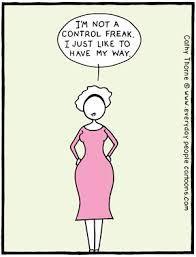 My blog this week is a guest post by Dr. Flora Brown, who taught critical thinking for 20 years at Fullerton College in California. Dr. Brown muses on the illusion of control in our lives.
My blog this week is a guest post by Dr. Flora Brown, who taught critical thinking for 20 years at Fullerton College in California. Dr. Brown muses on the illusion of control in our lives.
The 1970s American comedian Flip Wilson became famous for his portrayal of sassy Geraldine, who excused her behavior by saying “The Devil made me do it.” This trademark quip became a national catch phrase.
It’s human nature to place blame outside ourselves for our behavior. But it is equally unproductive to believe we have control in situations where we do not.
Each morning when I join my neighbor for a walk, I dutifully push the button and wait until the crosswalk man symbol appears, signaling that it’s safe for me to cross. Since modern signal lights are computerized, I have no control over activating that light. It just makes me feel better believing I do.
There’s a similar phenomenon in gambling. When modern casinos computerized slot machines, a decision was made to leave the handles for gamblers to pull for each play. Appropriately nicknamed “one-arm bandits”, these handles give gamblers something to do that reinforces the illusion they have control in a situation where they have none.
Benefits of the Illusion of Control
Believing we have control in situations where we have little or none can be empowering.
When I applied for a community college teaching position, it was to be the second full-time African American teacher in the history of a school approaching its 85th anniversary. While I had strong educational preparation and experience, the decision would be made by a committee of strangers who evaluated my application along with 100 similarly qualified teachers. My fate depended on many considerations other than just my personal qualifications.
If I had thought about how little control I had over the decision of that committee, I might never have applied. But I didn’t think about that. I applied for the position and prepared well for the interview. If I hadn’t applied, I definitely wouldn’t have gotten the job where I enjoyed a 20-year career.
Sometimes, the illusion of control encourages us to take responsibility for our actions.
Do We Ever have Control?
When, if ever do we have control?
We all laugh at Geraldine when she says “the Devil made me do it” because we immediately recognize it as a handy excuse for her excessive shopping. But most of us have difficulty recognizing how we smudge the line between what we control and what we don’t.
In reality, our thoughts and actions are the only things that belong to us. We never have control over what another person does or says, or the circumstance we encounter. We just have control over what we think about and how we react to what we experience. Our attitude will not change the situation or outcome, but it will increase our chances of survival and triumph.
In his powerful book, Man’s Search for Meaning, Viktor Frankl, one of the world’s best-known Holocaust survivors, tells of the day he began to see beyond the reality of the daily horror he endured in the camps.
We who lived in concentration camps can remember the men who walked through the huts comforting others, giving away their last piece of bread. They may have been few in number, but they offer sufficient proof that everything can be taken from a man but one thing: the last of the human freedoms—to choose one’s attitude in any given set of circumstances, to choose one’s own way.
After suffering in four concentration camps for three years, Frankl was released, but his wife, parents, and family had all died in the camps. Frankl went on to become a psychotherapist and developed a treatment called logotherapy, which theorizes that our primary motivation is our search for meaning in life. He believed that if we can find personal meaning in life, we can overcome dismal circumstances.
Frankl’s experiences in the concentration camps did not make him vengeful, insensitive, or uncaring toward others’ sufferings. Instead, he realized that the guards could take everything from him, including his life, but they couldn’t control his mind or spirit. They couldn’t stop his sense of the search for meaning in life.
Frankl discovered it is our inner control that gives us power in our lives. It is discovering meaning—in a world that is out of control—that gives us peace.
The Shift in Control
It can be exhilarating to feel in control, to be able to direct our lives like a ringmaster. Some people fight to hold onto perceived control, and others cheat for it, lie for it, and even kill for it. Even so, the reality is that no amount of victory, good fortune, physical fitness, prayer, personal achievement, fame, yoga, or meditation will spare us from eventually finding ourselves in situations over which we have no control.
Since we know these situations will recur, how great it would be to greet them like a friend, no longer trying to control them, but learning from them and letting them pass. On that day, we’ll be equally at ease with taking responsibility for our behavior and relaxing when we are not in charge.
 Flora Morris Brown, Director of Content for www.ColorYourLifePublished.com, helps take the fear out of publishing, whether it’s your 1st or 7th book. Her 4-week on-demand e-course Rockin’ My Book, helps executives, coaches and entrepreneurs to increase credibility by writing a book. She is the author of Color Your Life Happy: Create the Success, Abundance, and Inner Joy You Deserve, among other books.
Flora Morris Brown, Director of Content for www.ColorYourLifePublished.com, helps take the fear out of publishing, whether it’s your 1st or 7th book. Her 4-week on-demand e-course Rockin’ My Book, helps executives, coaches and entrepreneurs to increase credibility by writing a book. She is the author of Color Your Life Happy: Create the Success, Abundance, and Inner Joy You Deserve, among other books.
Flora Morris Brown, Ph.D.
www.coloryourlifepublished.com
Dr. Brown’s comment continue the discussion on the broad range of issues that confront my protagonist, Lindsey Chandler, in my novel, A Fitting Place. If you would like to contribute to the discussion, please check the topics and guidelines here.
The post The Devil Made Me Do It and Other Lies appeared first on Mary Gottschalk - Author.
March 24, 2014
Waiting To Be Asked
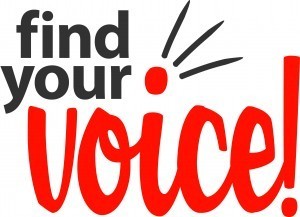 As I noted last week, socially accepted gender roles influence behavior in ways we do not always recognize. My focus this week is on what I think of as “waiting to be asked.”
As I noted last week, socially accepted gender roles influence behavior in ways we do not always recognize. My focus this week is on what I think of as “waiting to be asked.”
Most of my readers are familiar with social norms that encourage many types of assertive and / or aggressive behavior in men, but are less approving of it in women. Those stereotypes, which often label “assertive” behavior in women as “aggressive” are breaking down, but they are still with us.
A significant element of this stereotype, since the days of Gloria Steinem marching down Fifth Avenue in New York City, has been the assumption of widespread male chauvinism, defined (by Merriam Webster as “an attitude of superiority toward members of the opposite sex”). In other words, women’s failure to succeed is all-too-often the fault of men who do not appreciate their skills and or reward them accordingly.
For the first fifteen years of my career in high finance in New York City, I accepted Steinem’s proposition without much question, despite the fact that I was a successful woman in a predominantly man’s world. My success continued in Australia, despite the fact “Aussie Ockers” were reputed to leave male chauvinists for dead.
What was different was the way I saw women in Australia. There, for the first time, I had a peer who was an exceptionally competent woman. While I loved my job, she hated hers. I soon realized that one of the biggest differences between us was that she was waiting to be asked.
In advance of client meetings, I would always advise my boss on what I needed to move my part of the project forward. Whether he incorporated my requests into his agenda or turned the meeting over to me, I always walked out with what I needed to do my job.
My officemate, by contrast, believed that he should ask what she thought or what she wanted to accomplish. Except he never did, leaving her constantly frustrated by her inability to get the information and resources she needed. She was a perfect example of the phenomenon described in an inspiring little treatise, Lady Leader, 10 Ways to Play in Big Boy Business, by Mary Stier (at one time a top executive for a Fortune 500 media company). Stier points out that there are a host of reasons why women hesitate to speak out: fear of rejection or scorn, lack of self-confidence or self-awareness, family pressure to be “ladylike,” a misguided sense of entitlement, and/or misunderstanding of priorities.
Stier’s point is that it is your responsibility to speak up. You can’t complain that you’re not appreciated you if you don’t make your voice heard. For whatever reason, my officemate in Australia did not make her voice heard while I did.
The issue can be as much a problem in a personal dimension as it is in professional one. The protagonist in my novel, A Fitting Place, has no problem making her voice heard in a professional context. In her personal life, however, she has consistently withheld her opinions from her successful and prominent husband. As her same-sex love affair causes her to re-think social norms about gender roles, she also begins to re-examine her own responsibility for making her voice heard in a romantic relationship, whether it be with a man or a woman.
Do you make sure your voice is heard?
This continues the series on themes that are significant in my upcoming novel, A Fitting Place. If you would be interested in doing a guest blog on one of these themes, click here.
The post Waiting To Be Asked appeared first on Mary Gottschalk - Author.
March 18, 2014
Doing Gender
 “Talking about gender for most people is the equivalent of fish talking about water.”
“Talking about gender for most people is the equivalent of fish talking about water.”
So said Judith Lorber in her 1994 book, Paradoxes of Gender, where she observed that gender and gender roles are “the routine ground of everyday activities.” She added that “Gender is so pervasive that in our society we assume it is bred into our genes.”
Lorber’s book made the case that gender is not genetically based and that gender roles are a “social construct.”
For those of you not familiar with the term, a social construct is something that does not exist in the real world. Rather, it takes its existence from the customs and practices of the society or culture in which it occurs.
A commonly cited example of a social construct is money. How many times have you stopped to ask yourself, as you paid for your morning coffee, how much your $5 bill was worth? Not many, I suspect. You just assume it’s worth $5.
In reality, money has no meaning apart outside of an economic context and its worth as a medium of exchange derives from general acceptance of a value typically defined by a governmental agency. In the absence of such acceptance, your $5 bill is worth about 10 cents, the cost of its materials. Its value in a foreign country can be higher or lower, and may vary from day to day. Even in the U.S., it’s worth a lot less in terms of purchasing power than it was 20 years ago.
In other words, the value of money changes as circumstances change.
Like money, gender and gender roles change as cultural norms change. Think, for example, of the buxom and well-rounded women favored by Rubens versus the slim, almost anorexic creatures of modern advertising. Gender roles—reflected by clothing styles, by labor force participation, by assumptions about intellectual, emotional and physical capacity—have evolved dramatically over the centuries and continue to do so.
Why then, if gender is a social construct, are so many of us trapped by gender roles that chafe? Lorber’s response was that most of us “do gender” without thinking. We follow patterns instilled since childhood because they are easy, because doing so feels safe, because we think it is expected of us. Gender roles, in many cases, are an essential aspect of our all-too-often-unproductive comfort zone.
This is the dilemma faced by Lindsey Chandler, the protagonist in my forthcoming novel, A Fitting Place. Lindsey is an intelligent and capable woman with a successful career but a failed marriage. Like the fish that can’t “see” the water, Lindsey relied unthinkingly on prevailing social norms about marriage and the role of a wife. Only when she found the destructive patterns of her marriage repeated in her relationship with a woman did she begin to “see” how these gender-based assumptions had blinded her to the options she had had all along.
How have socially accepted gender roles affected you? How has your acceptance of those gender roles limited your options?
This continues the series on themes that are significant in my upcoming novel, A Fitting Place. If you would be interested in doing a guest blog on one of these themes, click here.
The post Doing Gender appeared first on Mary Gottschalk - Author.
March 5, 2014
Taking a Break
I will be taking a break from my blog as I wend my way back home after six weeks in Florida. Long drives, a bit of sightseeing, and catching up with old friends is not conducive to thoughtful blogs.
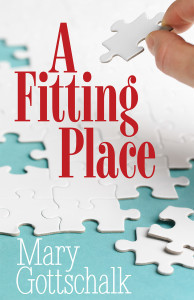 I will be back in two weeks, with more news on the May release of my novel, A Fitting Place.
I will be back in two weeks, with more news on the May release of my novel, A Fitting Place.
The post Taking a Break appeared first on Mary Gottschalk - Author.



